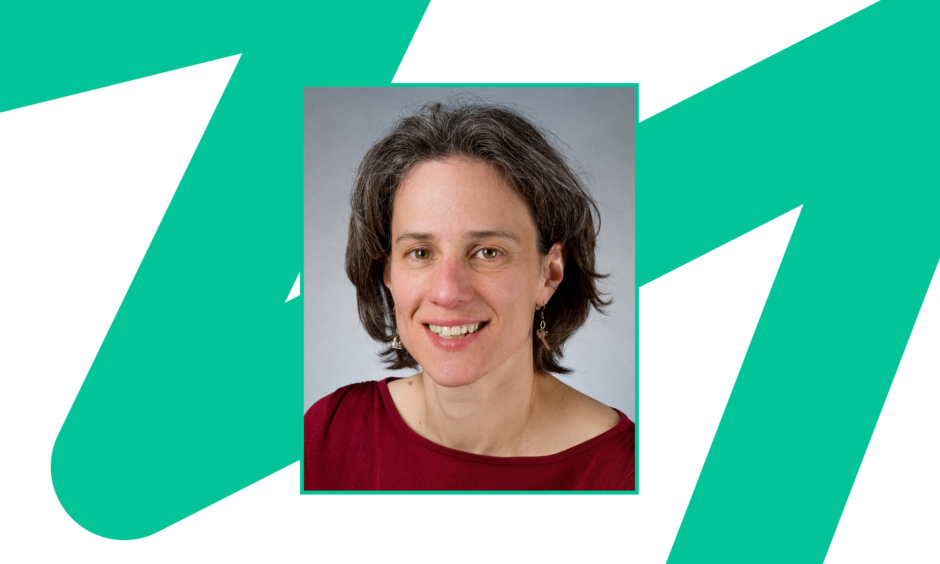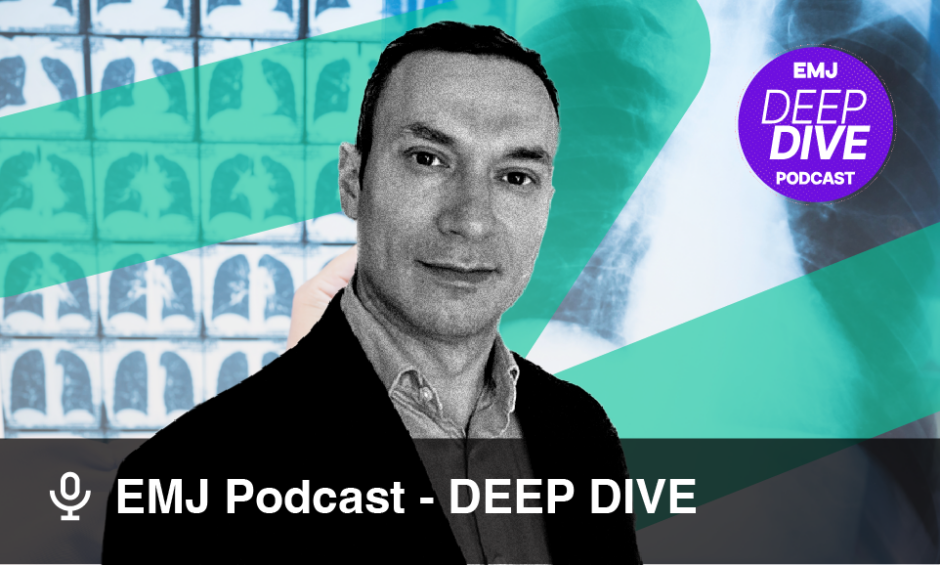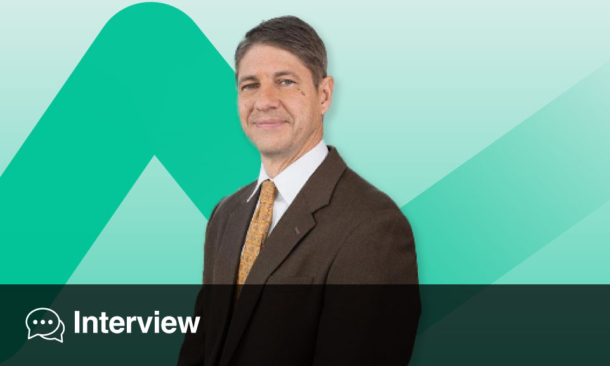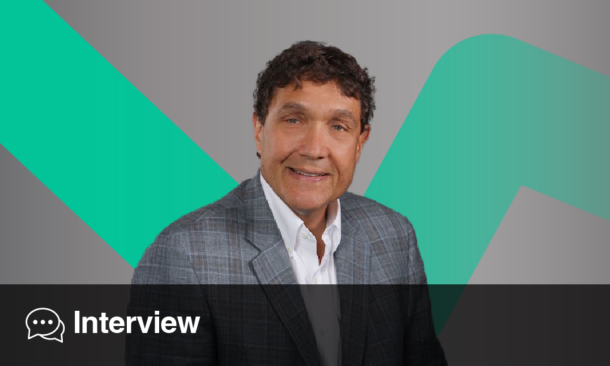Debra M. Boyer | Division of Pulmonary Medicine, Department of Pediatrics, Nationwide Children’s Hospital, The Ohio State University College of Medicine, Columbus, USA; Co-chair of the International Conference Committee for the American Thoracic Society (ATS)
Citation: Respir AMJ. 2023;1[1]:51-55. DOI/10.33590/respiramj/10305111. https://doi.org/10.33590/respiramj/10305111.
![]()
Were you initially interested in pursuing a career in pediatrics? What was it about pediatric pulmonology that drew your attention?
I think a lot of us initially get inspired by individuals, and it was a particular individual for me, who I thought was phenomenal who attracted me to learn more about the field. We have remained friends, and he is a mentor and an inspiration to me to this day.
Once I started, I really enjoyed the patient population and the fact that you can establish significant longitudinal relationships with patients, whether it is a patient with cystic fibrosis (CF) or patients with lung transplants. I see these patients more often than their pediatricians and really get to know them.
I also enjoyed the ability to do procedures; however, I did not want to be a surgeon and spend all my time in the operating room. I liked doing bronchoscopies and interventions, but also seeing my patients awake and being able to talk to me. And then I just enjoyed the physiology and the fact that pulmonary medicine involves the whole body as opposed to just focusing on one organ. This is very true with CF or patients of lung transplant. While I have to know pulmonary physiology, I also have to know about infectious disease, reproduction, mental health, and gastroenterology. I like the fact that while I focus on the lungs, I also have to know a lot of medicine, which was very interesting to me.
Having specialized in lung transplantation, what do you think are some of the unique challenges associated with lung transplantation?
Lung transplantation, whether it is pediatric or in adults, is probably one of the hardest areas to have success, aside from intestinal transplantation. Heart, kidney, and liver transplants have much better outcomes than lung transplants. Added to that is the challenge of finding donors. The good news is that there are fewer children dying and becoming donors, but the flip side of that is when you have a sick child who needs a lung transplant, there are fewer donors available. This means children often have to wait longer, and we have to find ways to keep them comfortable while waiting for a donor. Finally, it is about finding the balance between immunosuppression and allowing them to accept the organs, while not giving them so much immunosuppression that they then get infections and consequences from that. When you do a lung transplant in pediatrics, you hope a child can have as normal a life as they can. You do not want to do a lung transplant and then have them live in a bubble, unable to do anything. While we want these children to go out and live and do things, that also exposes them to risk and infections. So, it is about finding a balance to have a life, but to also be somewhat reasonable.
You co-authored a paper earlier this year entitled ‘A statement on the current status and future needs of the pediatric pulmonology workforce: Pipeline Workgroup’. Can you talk about the main findings from this paper and whether workforce shortages are a particular challenge in pediatric medicine compared to other specialties?
This is an area that I, and the community of pediatricians and pediatric subspecialties, are very interested in. There are a lot of initiatives that think about this, and I have been involved with a number of them. The short answer is yes. There is a tremendous shortage both of general pediatricians and of pediatric subspecialists, including pulmonary, nephrology, and infectious diseases; however, the reason why is complicated. This paper looked at trying to understand why people choose to go into a subspecialty, and to identify areas where you can intervene. If the reason is to do with finances or the length of training, for example, you can intervene.
So, we talked with trainees as to why they were interested in pediatric pulmonology. A lot of the reasons were similar to mine: they were interested in bronchoscopy, applying pulmonary physiology, and longitudinal relationships. After looking at different literature and analyzing trainee surveys, we looked at the different reasons. Two very significant factors include exposure and mentorship.
There was also a question about whether the length of training affected people’s interest in going into the field. In the USA, to do what I do, after medical school you complete 3 years of pediatrics and then 3 years of fellowship training in pediatric pulmonary, and we wondered whether that is too long. It is not really clear if that length of time negatively influences pediatric residents to choose pediatric pulmonary training.
Then there was the question of whether debt had an influence, as in the USA we accumulate a lot of debt when going to medical school.
The short answer to that is it is not clear. It might play a role, but a lot of trainees do not think about debt when they choose a field, as they choose based on what they are interested in. In pediatrics, we get paid a lot less than our adult counterparts, based on government reimbursement. This is not okay and could be another reason, but more data is needed.
The paper addressed all these different things, and really recommended the need to mentor our trainees. We need them to engage with us as pediatric pulmonologists, get them to conferences, and really show them that what we do is pretty amazing, and that it is fun to work with kids.
One of your prominent research interests is medical education. What would you most like to see optimized in medical education surrounding pediatric pulmonology?
We are doing a lot of research into what is the best way to teach. Generations are different, and the way people want to learn changes. The biggest change in medical education is probably moving towards what we call competency-based medical education. In the USA, all our training is time-based. As I mentioned before, you do 3 years of a pediatrics residency after medical school. However, there is now a question of if it should be based more on competency. I might, for example, only need 2 years to achieve competency, whereas somebody else might need 4 years. Should it really be based on length of training, or should it be based on when you achieve those metrics? A lot of people are thinking about it logistically, which is challenging. If you do not know how long trainees might be around, it makes it harder to plan a program for them and to take care of the patients under your care. So, it can get complicated, but that is one of the exciting areas in medical education, and I think is the right way to go. It is super challenging to think about how to how to do it well, and how to implement it properly and safely.
At the moment, different certifying bodies are at different stages in applying this. The American Board of Pediatrics (ABP) have developed different tools such as entrustable professional activities that are more competency-based tools. Over time, I think it will become more and more part of what we all do, but right now it is still evolving.
What are the key areas of focus for the American Thoracic Society (ATS) this year?
I can speak best about the congress in general, which I think reflects on the society. Our goal is to serve our membership and to be one of the premier, if not the premier, respiratory society in terms of research, clinical care, and advocacy for pulmonary, critical care, sleep medicine, and pediatrics. We are the ATS, but we have a pretty substantial international membership, despite taking a little hit with COVID-19.
With this conference there are a couple of goals that we are hoping to accomplish, and I think a lot of that is set by the fact that we are in Washington, D.C., USA, which is our capital. There is a particular emphasis on advocacy and how we can all participate. A lot of the sessions are focused on how scientists, clinicians, and researchers can also function as advocates and help to improve the respiratory health of people in the USA and abroad. While we have a lot of science, education, and clinical areas being presented, we are also moving into how we can also advocate for things like global health, health disparities, health inequities, climate change, and gun violence. Those are all areas that have multiple touch points during the conference, and we hope that the government folks that are in town in Washington, D.C., can participate as well.
We have three keynote sessions at the start of the first 3 days of the conference to set the tone. The first session talks about how science promotes health equity by decreasing disparity, thinking about health care disparities and health care equality. The second session touches on how climate influences health, both positively and negatively. And then the last session is something that, unfortunately, is a huge problem in the USA, which is gun violence. This will be a panel discussion about reducing gun violence through advocacy, and it will explore what we can do as individuals, but also as caregivers and researchers, to have an impact on reducing gun violence. The hope is that those keynotes will set the stage for the rest of the conference and thinking about how to put the things we have learned into action.
How does the ATS use its position to educate surgeons, nurses, and trainees about the field of thoracic medicine?
There is no one way to educate everybody, and one of the things that we take pride in at our conference is the number of people who attend. You cannot provide one way to educate all these people; therefore, we offer a large variety of sessions and session types during the conference.
I have always been impressed at the number of different things you can do at the congress. There are large plenary sessions and keynotes, which are in large rooms and where you just listen. There are smaller symposia, where it is a little more comfortable and attendees have the ability to ask questions at the end. There are sessions that present science, clinical care, cases studies, or pros and cons. We have poster sessions where you can walk up and talk to the presenter, as well as education sessions, small group sessions, and meet-the-experts sessions. We try to offer variety so that, whether you are a nurse, a surgeon, a physician, or a trainee, you can get information in the way you want. My co-chair, for example, has more of an interest in basic science research and asthma, which is not something that I am as interested in; however, there are plenty of sessions for him to go to and plenty of clinical sessions, research, and medical education sessions that are interesting to me. The benefit of being a large society, and having a large conference, is that we can offer things in many different ways. This makes every individual’s conference experience really different.
The conference also offers an opportunity to network, and that is one of the reasons people want to go. I can give you a talk over Zoom (Zoom, San Jose, California, USA), but you cannot come up to me after my lecture to ask me a question or introduce yourself and ask me about my research. Networking is something that is very important to our members and is something that we foster. This year, we have put our Networking Centers together, so we have a super networking center, which includes individual centers for clinicians, young professionals, international participants, etc. There will be lots of different presentations there, but also just time to meet people, and to exchange information and ideas.
What were your proudest achievements in your role as chair of the Education Committee for ATS?
I was on the Education Committee for about 9 years in total, and I was chair for the last 5 years. I am very passionate about education, so being able to combine my interest in education with my clinical interests in pulmonary medicine was a blessing. One of the things we tried to do was help the rest of the Society to improve how we educate each other. This includes improving the quality of the sessions at the conference, reviewing slides, and talking about innovative ideas. We also have a series of postgraduate courses, including hands on courses teaching bronchoscopy, extracorporeal membrane oxygenation, and ultrasound, which happen pre-conference. The other thing we did in my term as education chair was offer people the opportunity to obtain certification points at the congress for their national certifications. Being chair was fun; it was one of the more exciting jobs I have gotten to do.
What does your role as co-chair of the ATS International Conference Committee entail, and can you tell us about the work you aim to do whilst in this position?
The chair, or the co-chairs, do not dictate all the sessions; rather, we work with the membership, which is represented by leaders of our different assemblies. My role is to ensure that everybody can get some of their content into the conference, ultimately so that there is something for everybody. We want there to be content of interest to the basic scientist as well as clinicians. By working as co-chair, I can ensure that we get a wide variety of material. We have some significant input into keynote sessions, but we also rely on our membership and the leaders of our assemblies to program the specific sessions. This results in tremendous variety, and I am confident that anybody who attends is going to find something interesting to go to. In this role, I get to meet a lot of people and learn about areas that I maybe do not have expertise in.
Over the years that you have been practicing and teaching in the field of pediatric pulmonology, what are the most significant changes you have seen that have impacted clinical practice?
The easiest one is in the realm of CF. When I started my pediatric pulmonary training in 1999, not only were we just starting to formalize newborn screening, but the average lifespan was around 30 years of age. Now, with the new drugs and modulator therapies that have come out, we rarely see patients with CF in the hospital anymore. CF used to be the most common indication for lung transplant, both in adults and pediatrics; however, it is no longer the most common reason at all, because these children and adults are doing so much better, and their life span is extending. People training today do not see CF, which is good and bad as they need to learn about it. However, it is good because it means that the patients are doing better. This has been the most phenomenal change, and it is just amazing for that patient population.
As a prominent educator in the field, where can we expect to see your focus lie in the coming years?
This is something that I would have to think about. I moved to Nationwide Children’s Hospital, Columbus, Ohio, USA, because my role here predominately involves medical education. I probably spend 80–85% of my time teaching, and then I still do a some pulmonary and lung transplant care. I see myself moving more to thinking about education in pediatrics and the pediatric subspecialty, and my focus will be to continue to see how we can improve that. I spend a lot of my time thinking about the pediatric workforce, and how to ensure that we have enough pediatricians and pediatric subspecialists to take care of the next generation of children.
Another area that I am very interested in is thinking about pediatric physician scientists. Not only are there not enough pediatric subspecialists, but there are even fewer that become pediatrician physician scientists and do research. If we do not have people doing science, we are never going to advance in the field. If we did not have people doing research, we never would have had those advances in CF. One of the things I am very passionate about is thinking about how we can ensure that enough people are interested in pediatrics and interested in advancing our science because it is essential.








